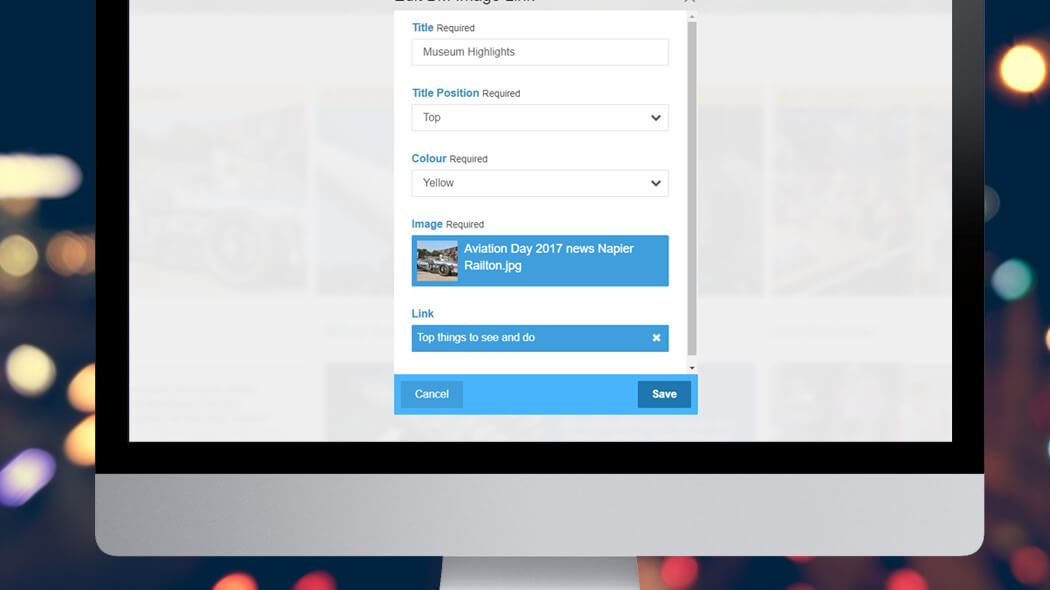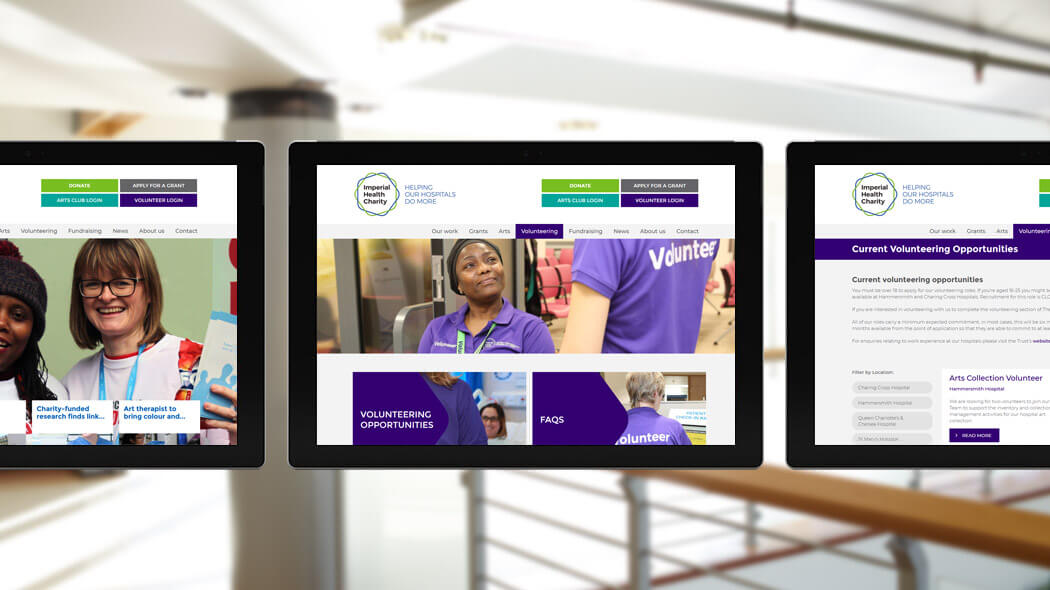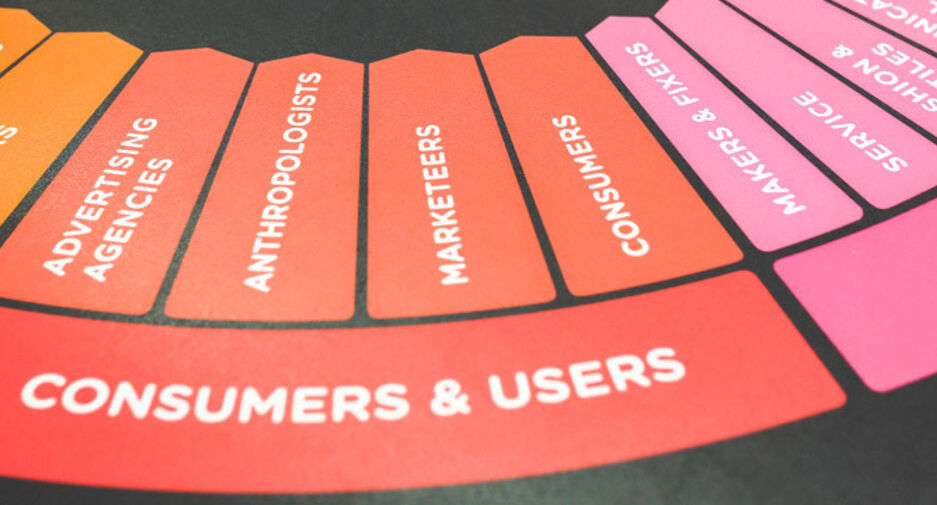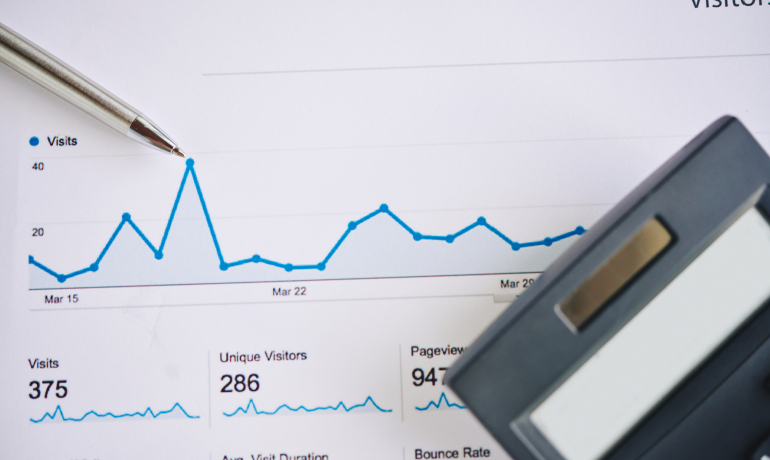What's in this article?
When you spend your time and money on a new website you want to make sure it is successful. It's not just about making it look nice, it needs to meet your businesses goals and improve and grow your success online
1. Identify your audiences
We're not building websites for fun, we are building them to appeal to your audience(s) and help convert visitors to leads or site members.
The people who visit your site fall into multiple audiences and your website needs to appeal to each audience.
For example, a museum website may have the following audiences:
- People looking to visit the museum
- People looking to learn the history of the museum
- People looking to visit a particular exhibition
- Members looking for members news, events and information
- People wanting to buy from the Shop
Imagine the things that each audience wants to achieve. For example, a person who wants to visit the museum may want to look for the latest events, buy tickets or learn what is on display at the museum.

2. Navigation and layouts that work
After considering your audiences you may have a lot of pages in the site appealing to different user groups. There could be a need for a clear distinction between various areas of the site, with clear tabs to each area. The use of coloured links or buttons can also help users identify and find different parts of each section.
The inner pages for each section can then be laid out for with each audience in mind to ensure they can find what they need and hopefull lead to a conversion.
It's important to make sure that users don't have to make too many clicks or navigate through complex or busy pages to reach a conversion point. Planning the site carefully with sitemaps and wireframes really helps with this.
By having different layouts depending on the page level that visitors are on, we can help prevent visitors getting lost or bored within the website.
A "mega menu" type approach with links grouped into easy to read columns can be really effective and make a complex site easy to digest. Users can easily delve into the wealth of information and media on a large site.

3. Plan it out and make sure everyone is happy
Although it can be tempting to start thinking about layout, colours and specific features, your business or organisation will have different people or teams responsible for vital tasks. Consult every team at the very beginning of the process to avoid "leaving anyone out".
For example a charity may have a Fundraising manager, Donations manager, Communications/marketing manager, Board of Trustees, Finance team and more to all keep happy!
We carefully plan projects with an overall sitemap to make sure all the pages are in the right place and nothing is lost, or buried too deep. Getting the architecture of the new website right from the start is really important and key to the success of the project.
After the site map, wireframe key pages to make sure the important stuff is obvious and easy to access within the page. This is where User Experience comes in and it's worth presenting your stakeholders with multiple wireframes to see what their reactions are, if they understand what the website offers and if they can find the answers to their questions.

4. Make it as easy as possible to update in the CMS
Making the site quick and easy to update means that the site owner or marketing team can easily do what they need to do to bring the site inline with their marketing efforts and push new content, news and offers.
Even if the site administrator farms website changes off to their agency, it makes sense that the site is editable in a good quality CMS like Concrete5 because it is less dependant on busy developers to make every change, which inevitably leads to delays.
Brooklands Museum wanted their website as easy as possible to update so that their in house marketing team could make changes on a daily basis. A large, fairly complex website was delivered but without sacrificing the ability for Brooklands Musem themselves to make nearly all updates to the site.
Even with a simple CMS, consider using custom blocks or functions to make it even easier to work with.
Brooklands Museum wanted their website as easy as possible to update so that their in house marketing team could make changes on a daily basis. A large, fairly complex website was delivered but without sacrificing the ability for Brooklands Musem themselves to make nearly all updates to the site.

5. Vary the page designs to keep the site interesting
The last thing we want is for your potential customers to get bored or confused and leave the site. By varying the page designs between different levels of sub pages in the site or between different sections, we can make the site more interesting and less repetitive.
Slightly different layouts for different sections or pages will also give stronger visual queues to the user to tell them where they are in the hierarchy of the website.

6. Add features that are really useful
A lot of the time the content of a new site is inherited from an existing site or written quickly to "get something up".
But consider nice/useful features that make the site more appealing such as getting professional video or adding an Interactive Map of your premisis.
Not only is it cool to add stuff that makes people go "wow" but video is great for SEO. Seach Engine Watch have a great article about how video and how you can use it to boost your content and SEO.
At the time of writing, personalisation is starting to play a major role in making websites more effective. What if you could show content that is directly specific to individual users rather than casting your net far and wide and trying to cater for everyone?
If your site has users who login, try to subtly collect more data about them, what they want and what they are looking for. Then you can start to show these busy people what they want to find quickly and effectively. This is an area that is really going to grow, but we need to be careful we are safeguarding user data, obeying the GDPR and not freaking people out too much!

7. Clear "Calls to Action" to guide visitors to the right place
For your website to succeed you need your users to find what they are looking for and buy from you, whether that is buying your products and services, or donating or contributing to your not-for-profit organisation.
So we need to guide them in the right way with strong Calls to Action (CTA). Remember your website visitors are busy. They don't want to spend all day on your site, they want to do what they need to do and get on with the rest of their busy schedule.
According to Time, the average user only spends 15 seconds on a webpage so we really need to make that count and show them the important stuff in the quickest and easiest way possible.

8. Works well at any screen size
It's rare to come across websites that aren't responsive now, but websites that use the screen space perfectly at all screen sizes is not so common.
Often site headers are quite large on mobiles taking up half the screen and navigation links are too small or close together.
By installing Search Console you can get warnings about any issues including mobile usability which help keep you informed so you can make necessary changes to the site.
Some content simply won't work well on smaller screens so it's worth making sure it changes at mobile sizes to something more usable.

9. Make it fast and efficient
Making your website fast is now an SEO ranking factor, which means the speed of the site influences SEO. This is important of course, but there is an even more basic reason why your site needs to be fast.
I bet you have found yourself on a slow website and decided you can't face loading another page because it takes so long? A slow site will mean your users go elsewhere too.
The trouble is, websites are complex busy things these days so how do we make it also load fast?
Well, making your website efficient will improve its speed. To optimise websites we reduce the number of CSS and javscript files that need to be loaded, improving speed. We can then reduce the size of images and use some special code to lazy load them to improve it further. There's no need to load everything in one go if it's not on screen yet.
We also look at the web server and using Litespeed caching to reduce the amount of work that the server needs to do in the first place.
There are more things that can be done, run your website through Google's Page Speed Insights tool to find out more.

10. Increase in traffic and maximise it's conversions
Your website is your digital shopfront. It sounds cheesy, but the more people find you online, the more sales you are going to make.
Of course, not everyone is going to buy from you but, it's best to do everything you can to maximise the chance of your visitors doing just that.
To begin with you need a strong foundation, this is the website itself. A professional website is worth it's weight in gold, it should be well planned out, expertly designed and built to last you many years, whilst giving you the flexibility to add to and grow it as your business requires.
I often speak to people who have built their own websites using online website builders. They often tell me a year or two (or even less) down the line they can't do something they need to so are now looking for a new bespoke site. There's nothing wrong with website builders for getting you started, just bear in mind that you may have to start again after a short time and this can cost you a lot of time and money if you have invested in marketing on the old site.
Once the site is running you need to get people to look at it. You can do this by going networking and handing our business cards, social media, search engine optimisation (SEO), pay per click, direct mail or best of all, combine some or all of these methods.
Make sure before you spend your marketing budget that your website loads fast, doesn't have errors and is well optimised to deliver conversions once your audience is reaching it.

Join the discussion
Want to have your say on this topic? Start by posting your comment below...
Related Articles
What web design projects have we completed for clients in London?
16 June 2025
If you’ve been Googling something like “web design agency in London”, chances are you’ve landed here looking for someone who really knows their stuff… Read more
Web design jobs in London
19 May 2025
London is one of the best places in the UK (and honestly, Europe) to kick-start a career in web design. The capital is buzzing with digital agencies,… Read more
14 reasons why your web site has a high bounce rate
06 May 2025
A high bounce rate will kill your sales! Whether you’re a business owner, marketer or DIY website builder, this guide is packed with practical fixes… Read more
Keep up to date



